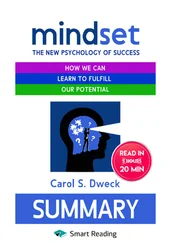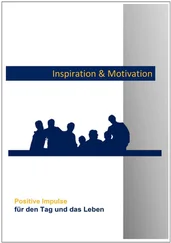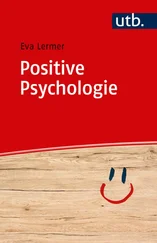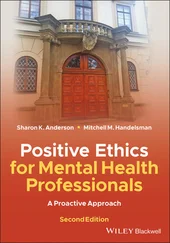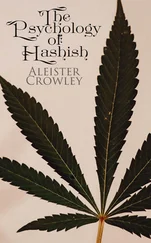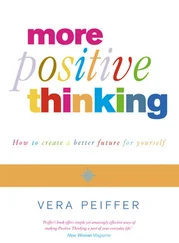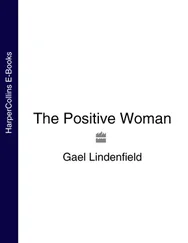The good thing about the new approaches to science is that they may encourage more transparency and honesty. Because of pressures to publish, difficulties in getting large samples, and the mere fact that underpowered studies could get into good journals, we have been less careful than we needed to be in ensuring that our studies are ones that future researchers can rely on. The cost of such carelessness, on all our parts, has been reliance on results that are “will‐o’‐the‐wisps,” setting back the field.
Developing and nurturing creativity in students or anyone else requires instilling particular attitudes toward life and work in those individuals (Sternberg, 2000). These attitudes include three kinds of defiance. The first is willingness to defy the crowd – that is, willingness to act in ways other than the ways in which one’s friends and colleagues are acting. The second is willingness to defy oneself and one’s past beliefs – that is, willingness to give up on beliefs one has held, perhaps deeply, when those beliefs are no longer justified or shown just to be plain wrong. The third is willingness to defy the ongoing zeitgeist (Sternberg, 2018) – that is, to question the often‐unconscious beliefs with which one conducts one’s life (such as that creativity is inborn and we can’t really do anything to increase it). Creative individuals also need to overcome obstacles, believe in themselves in the face of severe criticism, and realize that their expertise can get in the way of their creativity (Sternberg, Kaufman, & Pretz, 2002). What would it mean to develop positive creativity?
Developing positive creativity would go beyond what is required for developing creativity that can be positive, neutral, or negative. It would mean additionally asking oneself (a) what are the benefits of and positive uses to which my work can be put? (b) What can I do to augment the positive uses and benefits? (c) What are potential harms of my work? (d) What can I do to mitigate the potential harms? (e) What am I not seeing because I do not want to see it, such as long‐term effects beyond short‐term ones? That is, developing positive creativity would mean developing creativity leavened by intelligence and wisdom (WICS). It would mean thinking about not just coming up with novel and useful ideas, but also what the future implications and uses of these ideas would be. At the same time, we want to ensure the importance of the analytical component – that we assess whether the ideas are truly good ones that work.
There is no way to guarantee that one’s ideas will be put to positive use. But one greatly can enhance the probability of this happening if only one gives it some thought. I am doubtful that we scientists are teaching students to give their work that kind of thought (Sternberg & Grigorenko, 2004). We can become so preoccupied with career advancement and sometimes short‐range scientific advancement that we may not think about the long term. If we truly want to benefit science as well as education and society, we need to think long term, and we need to foster positive creativity, not merely creativity that may be neutral or negative.
Meanwhile, educators need to move beyond an educational system that heavily emphasizes analytic skills at the expense of positive creative skills. I argued long ago that our educational system tends to produce students who excel in analytical skills but never have much incentive through school to develop their creative skills (Sternberg, 1985a). These are the students who are most heavily rewarded throughout most of schooling, regardless of whether or not they develop their creativity. Historically, students who excel in analytical but not creative skills might come to graduate school and then find that their grade‐achieving skills no longer serve them as well as those skills did in grade school, high school, and college. But what if we, as a field, inadvertently made it enough to get by in a career just with analytical skills? If we further push in our educational system the development of analytical skills or even “hyper‐analytical” ones, we must make sure not to do so at the expense of pushing the development of positive creative skills. Analytically gifted but uncreative students become who they are not because they are born that way, but because their education makes them that way (Sternberg, 1985a). Education needs today, as it always has needed, to balance the development of positive creative skills with the development of analytical ones.
Being creative is usually uncomfortable and can be potentially dangerous. As noted above, it potentially involves defying the crowd, defying oneself, and defying the zeitgeist (Sternberg, 2018). There is a good reason that people always have been reluctant to be creative. They risk falling prey to the “tall poppy” phenomenon, whereby they end up as the tall poppy in a large field of poppies that gets cut down. The world at large needs positive creativity more than ever before. In our push to be transparent, we need to ensure that we encourage positive creative thinking. And, perhaps most of all, we need to encourage simultaneously not only the best science, but also the careful reflection, courtesy, civility, and plain decency that has come to be lacking in so much of contemporary discourse.
1 Clark, K., & James, K. (1999). Justice and positive and negative creativity. Creativity Research Journal, 12, 311–320.
2 Cropley, D. H., Cropley, A. J., Kaufman, J. C., & Runco, M. A. (Eds.). (2010). The dark side of creativity. New York: Cambridge University Press.
3 Cropley, D. H., Kaufman, J. C., & Cropley, A. J. (2008). Malevolent creativity: A functional model of creativity in terrorism and crime. Creativity Research Journal, 20, 105–115.
4 Cropley, D. H., Kaufman, J. C., White, A. E., & Chiera, B. A. (2014). Layperson perceptions of malevolent creativity: The good, the bad, and the ambiguous. Psychology of Aesthetics, Creativity, and the Arts, 8, 400–412.
5 Csikszentmihalyi, M. (1988). Society, culture, and person: A systems view of creativity. In R. Sternberg (Ed.), The nature of creativity: Contemporary psychological perspectives (pp. 325–339). Cambridge: Cambridge University Press.
6 Csikszentmihalyi, M. (2013). Creativity: Flow and the psychology of discovery and invention. New York: HarperCollins.
7 Falk, W. (2018, February 16). Editor’s letter. The Week, p. 3.
8 James, K., Clark, K., & Cropanzano, R. (1999). Positive and negative creativity in groups, institutions, and organizations: A model and theoretical extension. Creativity Research Journal, 12, 211–226.
9 James, K., & Taylor, A. (2010). Positive creativity and negative creativity (and unintended consequences). In D. H. Cropley, A. J. Cropley, J. C. Kaufman, & M. A. Runco (Eds.), The dark side of creativity (pp. 33–56). New York: Cambridge University Press.
10 Kahneman, D. (2013). Thinking, fast and slow. New York: Farrar, Straus, & Giroux.
11 Kaufman, J. C., & Beghetto, R. A. (2009). Beyond big and little: The Four C model of creativity. Review of General Psychology, 13, 1–12.
12 Kaufman, J. C., & Glăveanu, V. (2018). The road to uncreative science is paved with good intentions: Ideas, implementations, and uneasy balances. Perspectives on Psychological Science, 13(4), 457–465.
13 Kaufman, J. C., & Sternberg, R. J. (Eds.). (2010). Cambridge handbook of creativity. New York: Cambridge University Press.
14 Kuhn, T. S. (1970). The structure of scientific revolutions (2nd ed.). Chicago, IL: University of Chicago Press.
15 Lopez, S. J., Pedrotti, J. T., & Snyder, C. R. (2018). Positive psychology: The scientific and practical explorations of human strengths (4th ed.). Thousand Oaks, CA: Sage.
16 Plucker, J. A. (Ed.). (2017). Creativity and innovation: Theory, research, and practice. Waco, TX: Prufrock Press.
Читать дальше



